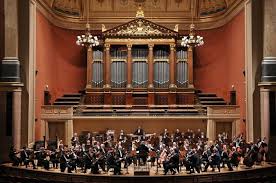St Mary in the Castle, Sunday 18th February 2018
Following the continuing success of the Jazz Breakfasts at St Mary in the Castle, it seemed reasonable to launch an Opera Breakfast linked to St Valentine’s Day. However, the underlying theme of the entertainment was much more subtle than a string of extracts might imply.
Marcio da Silva and Sophie Pullen drew together arias and duets from a number of Mozart operas to illustrate the joys and pitfalls of sexual relationships, giving the first half over to the predatory male and the impact of what today we familiarly call sexual harassment, while the second half praised the married state.
Don Giovanni opened the morning with his serenade to Don Elvira’s maid – though in this case Marcio sang directly to ladies seated close to him as he wandered from table to table. This was followed by the whole of the opening scene from Le Nozze di Figaro. If Figaro is naïve in his acceptance of the Count’s room his vicious anger in Se vuol ballare hinted that the French Revolution was only too close. Sophie Pullen gave a moving account of Deh vieni non tardar showing her constancy even in the face of the Count’s attempted seduction. Happily Suzanne knows only too well how to deal with him – though not so Zerlina who seems to give in all too easily to Don Giovanni at the end of La ci darem la mano. In between Sophie Pullen had given us a full-blooded rendering of Come scoglio from Cosi fan tutte, where Fiordiligi proves her strength in the face of male onslaught. While Sophie Pullen had given us a fine range of female protagonists, Marcio da Silva had gone from debauched rake to revolutionary and back again.
The second half was all drawn from Die Zauberflote concentrating on the relationship between Papagano and Papagana, with just enough time to take in Bei mannern, with Sophie Pullen morphing easily into Pamina, where she stayed for a very moving rendition of Ach ich fuhl’s.
Throughout, Simone Tavoni had accompanied from the piano, adding in the bells and whistles in the second half, as easily as he brought the dramatic intensity to the heightened emotions of so many of the arias in the first.
The morning was a thank you for the volunteers who work so tirelessly for the venue and particularly those who have supported the work of Hastings Philharmonic. Let us hope it will be the first of a new line of breakfasts!

